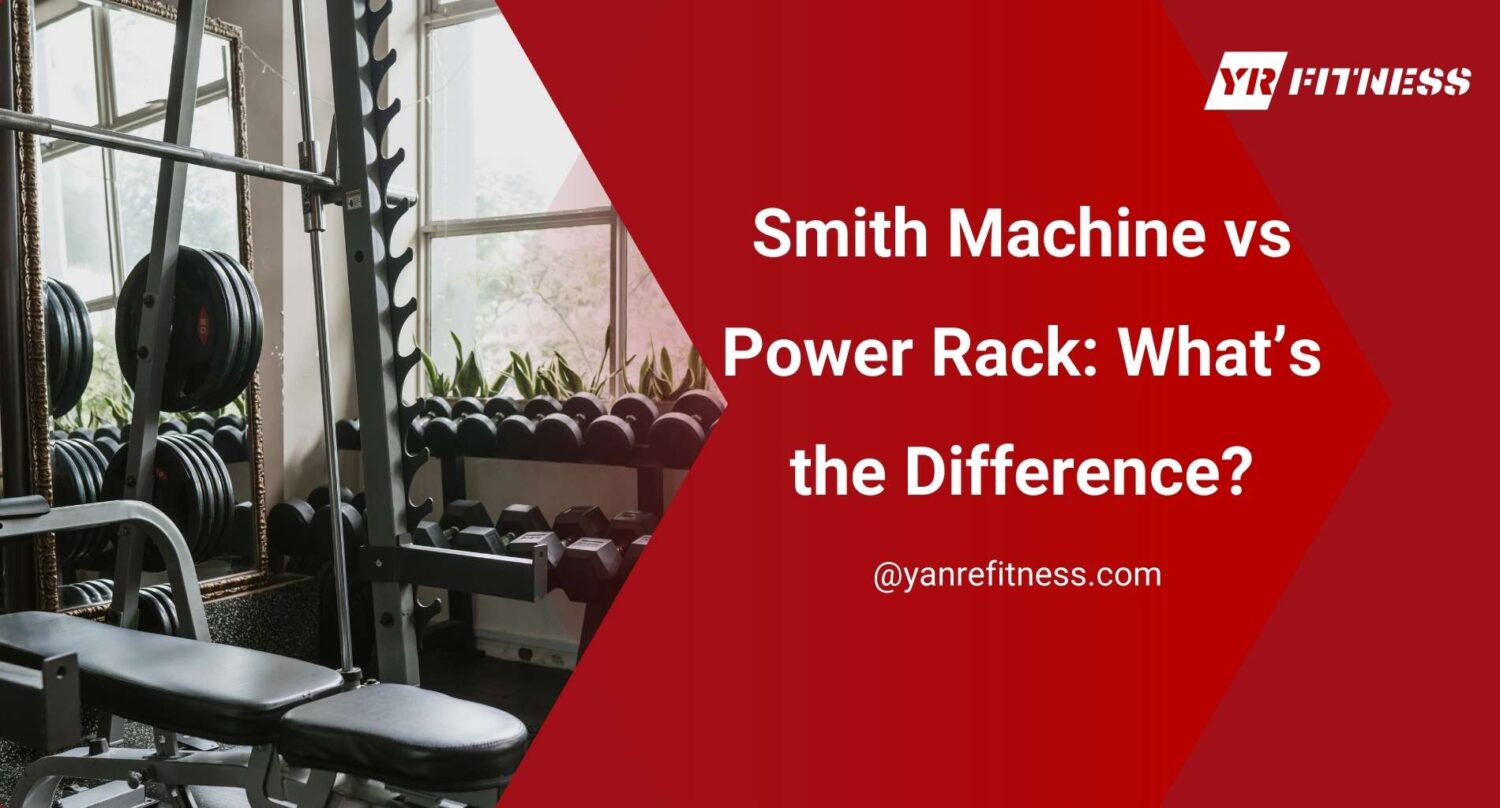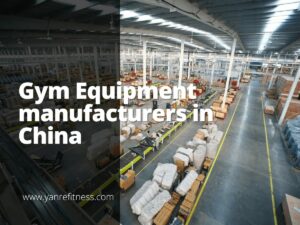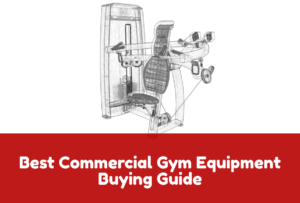There was a time I believed every commercial gym needed a Smith machine.
It looked secure, controlled, and easier for beginners. But then I saw lifters skip it every day, walking straight to the open rack instead.
I asked them why.
They said it felt too restrictive and robotic. And honestly? They were right.
If you’ve ever stood in your gym or your client’s and wondered which setup actually helps your members train better, this article is for you.
I’ve used both machines. I’ve watched clients struggle, succeed, and quit because of gear that didn’t match their training needs.
Here, I’ll break down the real-world differences between a Smith machine and a power rack. We’ll look at training options, safety, space, cost and how those choices affect your bottom line.
Let’s start!
1. Smith Machine vs Power Rack: Quick Comparison
I know how easy it is to get overwhelmed comparing equipment. So before we get into the thick of it, here’s a clear, side-by-side breakdown to help you see the bigger picture.
Feature | Smith Machine | Power Rack |
Functionality | Bar moves on a fixed vertical track | Bar moves freely in all directions |
Safety Features | Lock-out hooks at multiple height levels | Adjustable safety pins and spotter arms |
Space Required | More compact footprint | Takes up more space and height |
Exercises Supported | Limited to bar path movements | Supports full range of compound and isolation exercises with attachments |
Price Range | Typically higher upfront cost | Often more budget-friendly |
Ideal Users | Beginners, rehab users, solo lifters | Intermediate to advanced lifters, strength-focused gyms |
You’ve got the summary. Now let’s dig into what actually matters when people start lifting.
Looking to outfit your gym with the right strength gear? YR Fitness offers commercial-grade Smith machines and power racks, plus expert guidance to match your space, budget, and training goals. Reach out to us here and let’s build your perfect lifting zone.
2. Investment Value
Buying new equipment isn’t just about looks or brand names. It’s about value. Real value.
That means asking: Which one makes more sense long-term—Smith machine or power rack?
Let’s break it down by what you’ll spend, what you’ll get, and how long it’ll last.
Upfront Costs vs Long-Term Payoff
Start with the basics: price.
A commercial-grade Smith machine usually costs more upfront. Depending on the model and brand, you’re looking at $1,500 to $4,500, sometimes more if it has extra features like built-in cable systems.
A power rack? It’s usually cheaper. Many high-quality commercial models fall in the $800 to $2,000 range. That’s a big difference, especially if you’re outfitting more than one gym.
But price is just the beginning.
Now think about durability. Both machines are built to last, but in my experience, power racks tend to hold up better in high-use gyms. They’re simpler—fewer moving parts. Less that can go wrong. That means less maintenance, too, especially when sourced from a reputable commercial gym equipment manufacturer known for quality and reliability.
Smith machines have guide rods, counterbalance systems, and sometimes even integrated plates or pulley mechanisms. All of that needs regular cleaning and sometimes repairs. If those rods get sticky or the bearings wear out, it affects the whole experience.
You’ll also want to factor in extras:
- Power racks often need add-ons such as J-hooks, spotter arms, barbell holders, and attachments like dip bars or landmine units.
- Smith machines might seem “complete” at first, but if users want variety, you’ll still need to add benches or accessories.
Even with add-ons, a rack still tends to be more affordable and flexible over time.
Resale and Relevance
Let’s talk resale.
If you ever need to update your gym or move inventory, which machine is easier to sell?
From what I’ve seen, power racks move faster on the secondhand market. They appeal to a broader range of gym owners, PT studios, and even serious home users. Smith machines? They’re more niche. And they take up more space, which makes them harder to move.
Then there’s demand.
Right now, power racks are in higher demand, especially in functional training gyms, strength-focused setups, and even hybrid fitness centers. Many gym-goers prefer the freedom of a barbell with full control of their movement.
Why? Because the bar moves naturally. It’s not locked in a straight line.
So, which one gives you more for your money?
If your goal is to save upfront, reduce maintenance, and get more flexibility over time, the power rack usually wins.
But that doesn’t mean the Smith machine has no place. In certain gyms especially those with newer lifters or safety concerns, it still earns its keep.
Choosing the right machine isn’t just about what fits your budget today, it’s about what holds up over time and keeps your members coming back.
At YR Fitness, we’ve built machines that do just that. From power racks to Smith machines, we manufacture commercial-grade equipment that balances cost, durability, and everyday use.
Smart investments build strong gyms. YR Fitness designs commercial-grade power racks and Smith machines built to last—and to keep your members lifting safely and confidently. Connect with us here to find the perfect fit for your facility’s budget and training style.
3. Safety and User Experience
Safety is personal. Especially in a gym.
If you’ve ever watched a beginner struggle through their first squat, or seen someone panic under a missed bench press, you know what I mean. So when it comes to choosing between a Smith machine and a power rack, you’ve got to ask: Which one actually helps your members feel safer and be safer while training?
Let’s break that down.
Built-in Safety Features
A Smith machine has one clear advantage: its fixed bar path. The bar is locked into vertical guide rails, so it moves straight up and down. That makes it easier for people to maintain control—especially if they’re new to lifting. If someone gets stuck, they can rotate their wrists to hook the bar onto the nearest lock-out point. No spotter needed.
It gives people a safety net. That’s why many beginners like it.
A power rack, on the other hand, gives lifters full control over the bar. They can move in any direction. That freedom is great—but it comes with responsibility. Mistakes can happen if form breaks down. That’s where spotter arms and safety pins come in. When set at the right height, these features catch the bar before it hits the lifter.
It’s more hands-on. But it also lets people train the way their bodies move naturally.
Risk of Injury
Here’s where things get tricky.
Smith machines can feel safer, but they force your body into a fixed path. If your joints don’t move in that exact line, it can lead to discomfort—or worse, injury over time.
Power racks allow more freedom. That means your joints follow their own path. It also means if someone lifts with poor form, the risk is higher—unless they know how to adjust and stop safely, much like when transitioning from incline to decline bench exercises, where positioning impacts safety.
In gyms with a lot of beginners, I’ve seen the Smith machine act like a crutch. People load too much weight, thinking the machine will protect them. And sometimes, it does. But other times, it gives a false sense of security.
Now flip that.
In strength-focused gyms, I’ve seen racks used all day by experienced lifters. They know how to fail safely. They know how to adjust form mid-rep. And that’s something a fixed bar won’t let you do.
Supervised vs Unsupervised Use
Think about your setup.
Is your gym staffed 24/7? Or do people train alone, maybe late at night?
In unattended gyms, the Smith machine feels like a safer bet. Someone lifting solo can drop the bar into the lockouts if they fail. But with the right setup, a power rack can be just as safe. Spotter arms, safety bars, and good member education go a long way.
If you’re short on staff, though, ask yourself if your members are trained well enough to use open racks without help.
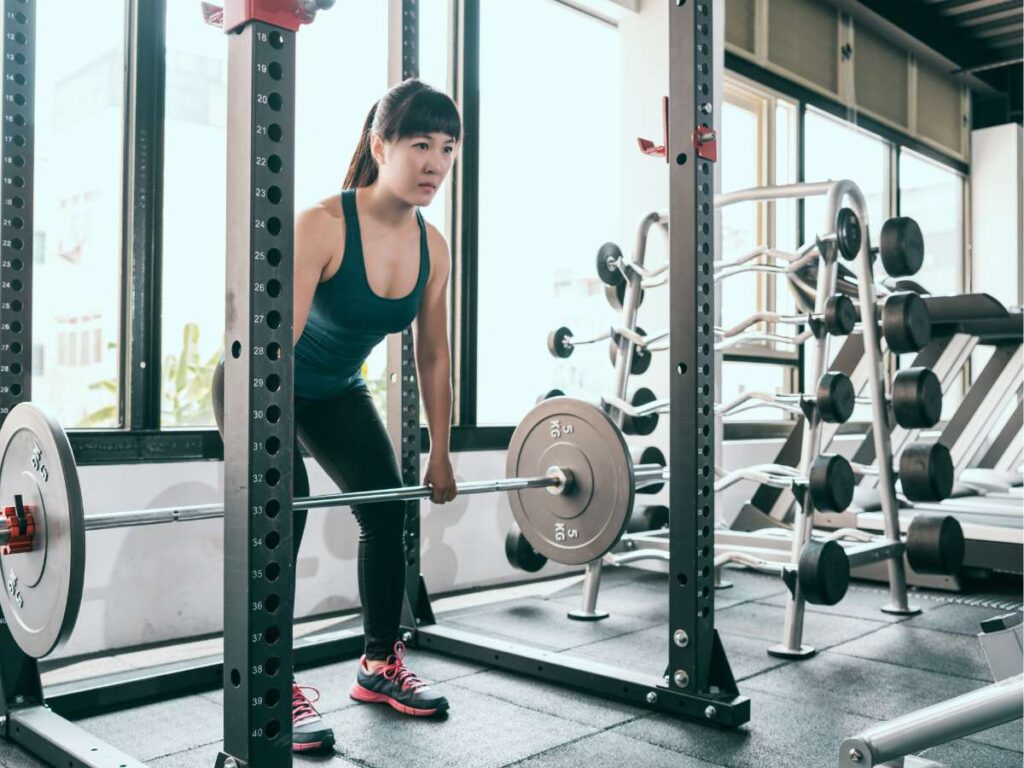
Safety builds trust—and trust keeps members coming back. YR Fitness engineers power racks and Smith machines that balance freedom with protection, so you can equip your gym for every lifter’s journey. Let’s talk about building a safer, smarter space for your members.
4. Training Flexibility
Once you know the safety and cost side, the next question is simple. How many ways can your members train on it? That’s where flexibility matters.
Compound Lifts Support
Let’s start with the big lifts.
A power rack gives full freedom for squats, bench presses, and even deadlifts. The open design means your barbell moves naturally. There’s no restriction on how your hips or shoulders shift during a lift.
A Smith machine can also handle squats and bench presses, but with a catch: The bar moves in a fixed, vertical path. That’s not how most bodies move. For example, an overhead press usually shifts slightly backward as the bar passes your face. A Smith machine blocks that. You have to press straight up, even if it feels awkward.
That difference matters.
Isolation Exercises
Now, if your gym has a lot of members focused on targeted movements, the Smith machine offers an edge.
It’s great for:
- Calf raises
- Upright rows
- Hip thrusts
- Controlled shrugs
Because the bar is fixed, users don’t need to stabilize. That makes it easier to hit specific muscle groups.
But a power rack can do more if you have the right attachments. Think:
- Pull-up bars
- Landmine units
- Dip handles
- Cable pulleys
You get more variety without locking people into a specific path.
Adjustable for Different Body Types
Here’s something most people forget.
Not every body moves the same way. Taller lifters. Shorter arms. Longer femurs. Everyone’s different.
A power rack works with that. Because the bar moves freely, people can adjust how deep they squat, where they grip, and how their joints align.
The Smith machine forces everyone into the same line. For some, that works. For others? It causes more harm than good.
Programming Variety
If your gym supports different training styles, variety helps.
Power racks work well for:
- Powerlifting
- Bodybuilding
- Functional training
- Group circuits
You can rotate through exercises quickly. Change bars. Add bands. Set up multiple stations—especially if you’re already integrating multi-purpose setups like rowing machines vs treadmills in hybrid programming.
Smith machines work better for:
- Isolation-focused routines
- Rehab training
- Lighter accessory work
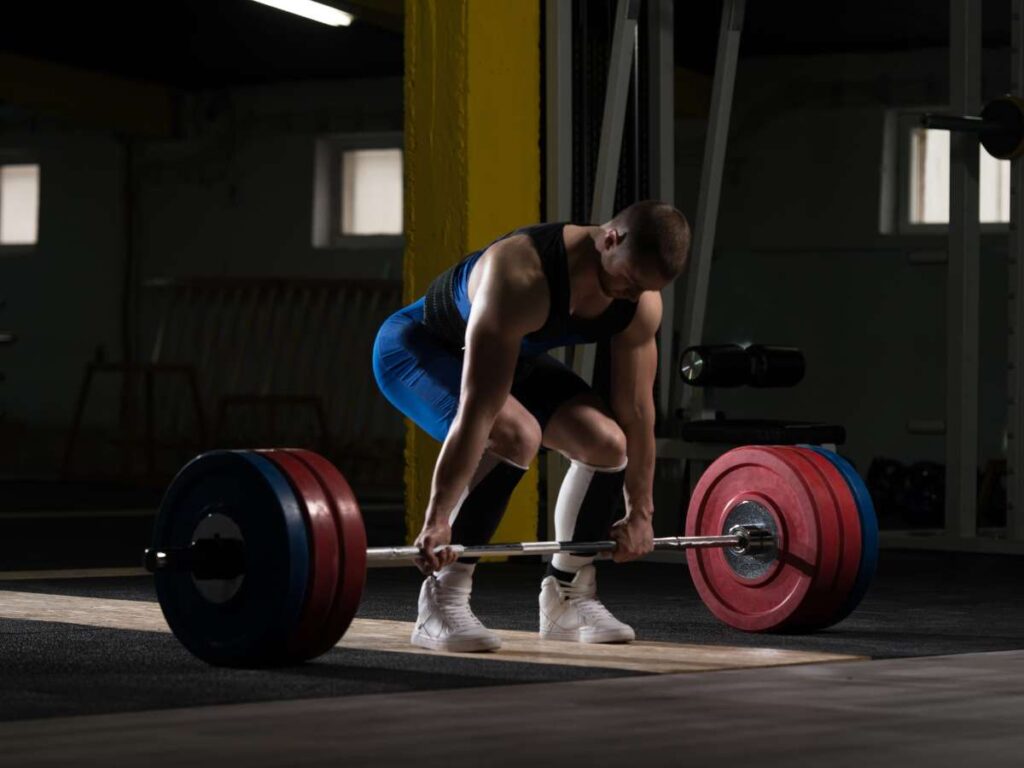
Whether your gym thrives on freedom or precision, YR Fitness builds racks and Smith machines designed for every training style. From compound lifts to isolation work, we help you create a floor plan that delivers maximum variety—and value. Talk to us about customizing your equipment lineup.
5. Space and Layout
Even the best equipment is useless if it doesn’t fit your gym. That’s why space matters. And not just square footage but height, layout, and what you can actually do with it.
Let’s walk through how each machine handles your space.
Footprint and Ceiling Height
Power racks are tall. Some commercial models go over 7 feet. They feel open and allow full movement, which is great—but if your ceiling is low or your gym is packed, this could be a problem.
They also need a little extra space in front and on the sides.
People need room to step back from the rack, re-rack the bar, and load plates.
Smith machines are more compact. The footprint is tighter, and since the bar only moves vertically, users don’t need much space around them. If you’re trying to fit more stations in a smaller room, this can be helpful.
But remember: compact doesn’t always mean efficient.
Utility per Square Foot
Now let’s talk about how much use you get from that space.
Power racks can handle multiple lifts. You can add:
- Landmine attachments
- Dip bars
- Pull-up handles
- Band pegs
- Cable pulley add-ons
With these, one rack becomes a full training station. You can rotate users or run small group sessions around it.
Smith machines tend to be limited. You get fewer movement patterns. And they’re hard to modify without custom parts.
So ask yourself: What kind of variety do your members expect?
Portability and Installation
Another thing to think about: can you move it later?
Most power racks aren’t bolted down. You can shift them if your layout changes. But they’re bulky. You’ll still need space to move safely around them.
Some Smith machines require floor anchoring, especially heavier ones. That means more setup—and it might limit future layout changes.
Also, think about flooring.
Do you have rubber mats or lifting platforms? Some machines need more support underneath, especially during heavy use.
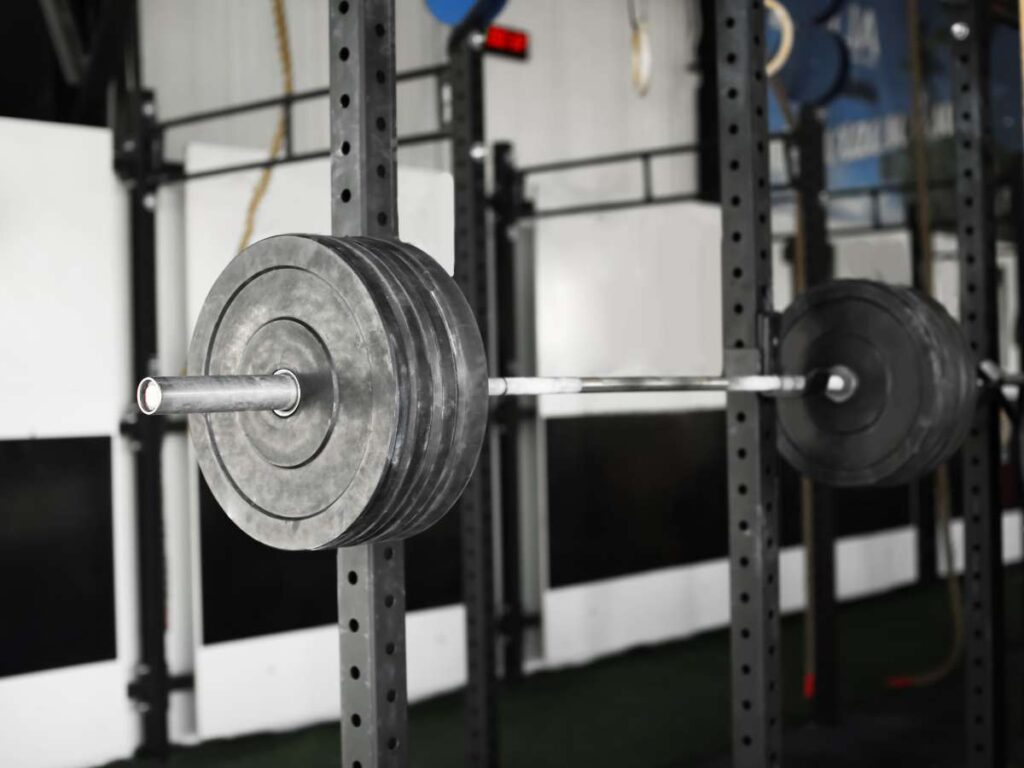
At YR Fitness, we build racks and machines that fit your layout—and your business goals. From maximizing utility in tight spaces to designing full training zones, we help you plan equipment that works as hard as your members do. Talk to us to map out the perfect gym floor plan.
6. Member Demographics
So far, we’ve looked at cost, safety, and space. But none of that matters if your members won’t use the equipment.
Different people train in different ways. And what works for one group might feel completely wrong for another.
Let’s look at who’s actually stepping under the bar.
Beginner vs Advanced Users
Beginners often feel more comfortable with a Smith machine. It looks simple. It feels stable. And because the bar moves in a straight line, they don’t have to worry about balance or form as much.
But that same simplicity can be limiting.
Advanced lifters tend to prefer the freedom of a power rack. It gives them control. They can fine-tune their lifts. Push themselves. Adjust their grip, stance, and range of motion based on their goals.
And here’s the thing: the power rack may look intimidating, but once people learn how to use it, they rarely go back.
In my experience, new members eventually outgrow the Smith. But they grow into the rack.
Gender and Age Considerations
Now think about the different types of people training in your space.
I’ve seen older adults and teen athletes feel more comfortable starting with the Smith machine. It gives them a chance to focus on the movement without worrying about balance.
Some women I’ve worked with liked that too, especially when training alone. The fixed path felt more secure.
But others found it restrictive. They wanted to lift how their body moved, not how the machine said to.
Power racks are more adaptable. Taller? Shorter? Longer arms? Doesn’t matter. You set the bar height and go.
At YR Fitness, we understand that the right equipment depends on who’s using it. Whether you’re outfitting a gym for beginners or advanced lifters, we’ll help you choose gear that fits your members—and keeps them coming back. Contact us to discuss the best solutions for your unique audience.
7. Maintenance, Support, and Lifespan
You’ve thought about space, safety, and who will use the machine. But what happens after it’s installed?
Let’s talk about how well these machines hold up and what it takes to keep them running.
Parts That Break First
From what I’ve seen, Smith machines have more parts that can wear out. The guide rods collect dust and sweat, which makes the bar stick over time. Some models also use pulleys or counterbalance systems, and those need to be checked regularly. If they wear out, the whole lift feels off.
Power racks are simpler. There aren’t many moving parts. The main issues I’ve noticed:
- Safety pins getting bent or scratched
- Paint chipping around high-contact areas
That’s it. Nothing that stops someone from lifting. And nothing that’s hard to replace.
Cleaning and Upkeep
When it comes to daily care, the power rack wins. Wipe it down. Check the bolts once in a while. That’s about it.
A Smith machine needs more love:
- Clean the guide rods
- Check for sticking
- Lubricate parts
- Inspect locking mechanisms
If your gym is busy or your staff is stretched thin, this can be a problem.
Warranty and Parts Replacement
Support matters especially when something breaks.
In my experience, power racks are easier to service. Most parts are universal. If something bends, you can replace it quickly.
With Smith machines, it depends on the brand. Some use custom parts, which can be a headache to source.
If you’re a distributor, ask yourself:
Can I support this machine after the sale?
Will my clients call me when something breaks and can I help them fast?
Smart gyms plan for the future, not just the first day of install. If you want equipment that’s low-maintenance, durable, and easy to support, talk to us and let’s make sure your investment lasts.
Conclusion
Every gym owner hits this question: Which machine actually gets used?
You’ve seen how the Smith machine and power rack stack up. From function to maintenance, beginner needs to resale value, we’ve covered it all.
I’ve watched gyms thrive with the right setup. And I’ve seen others struggle with gear that never gets touched.
So now it’s your move. Pick the machine that fits your people not just your plan.
Need help deciding? Contact us today and let’s talk through it.
Related articles:
